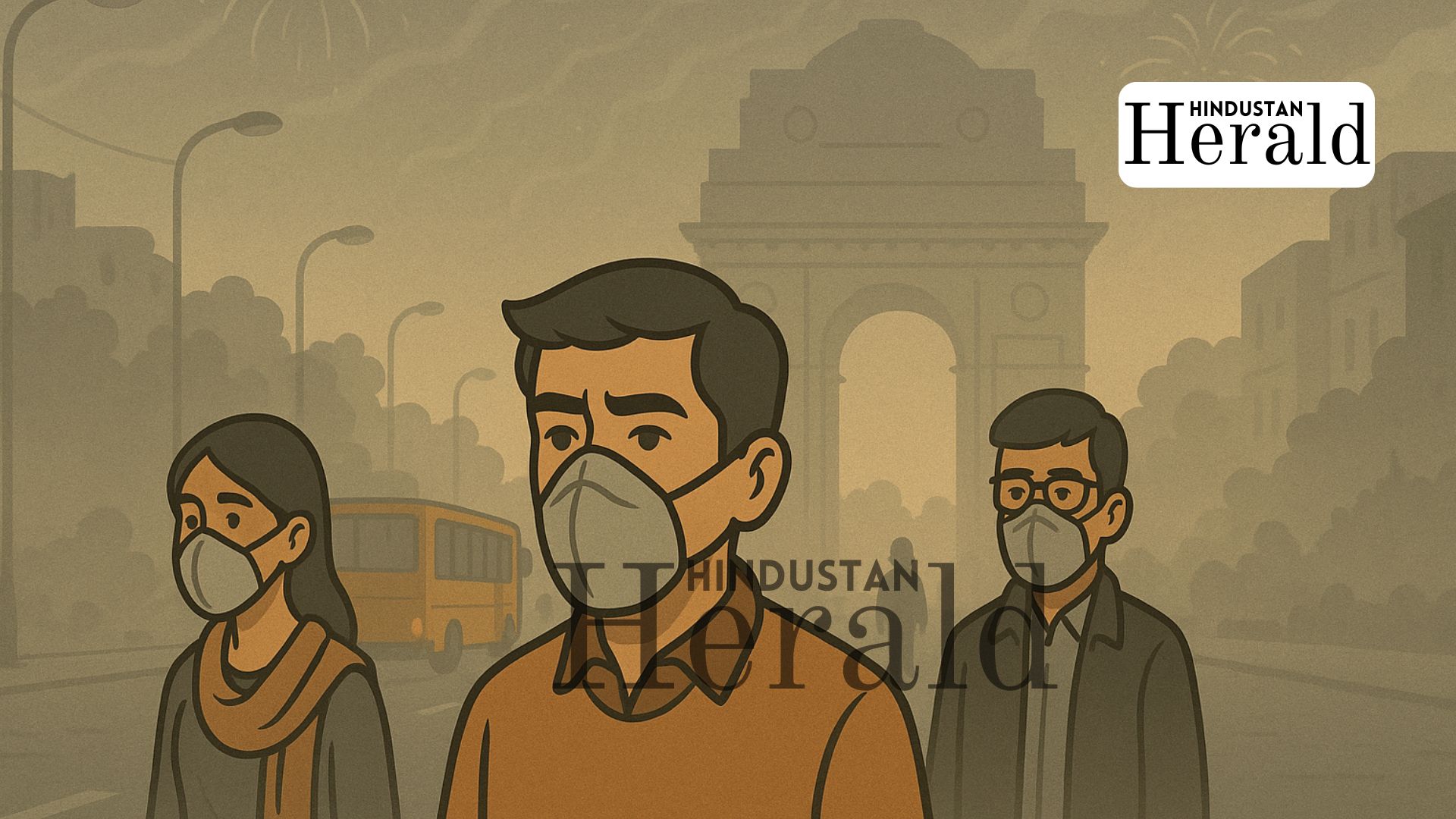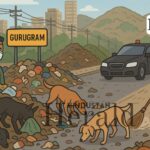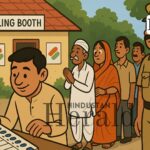New Delhi, October 21: By sunrise on Tuesday, Delhi had vanished. The skyline was gone behind a grey curtain, the air smelled faintly of burnt paper, and people stepping out to fetch milk were rubbing their eyes. A night of fireworks and smoke had done what it always does the capital woke up gasping.
A City Drowning In Its Own Air
The numbers came in quickly, though no one needed them to tell the story. The Central Pollution Control Board measured the city’s air quality index around 350, which means “very poor”, but many pockets went straight into the “severe” zone Bawana 431, Jahangirpuri 407, Wazirpur 408. That’s the kind of air that can make you cough after a single deep breath.
Almost every monitoring station in Delhi turned red. According to The Times of India, 36 out of 38 were above danger levels. Global tracker IQAir showed the same: PM2.5 levels at 282 micrograms per cubic metre, about twenty times what the WHO says is safe.
By mid-morning, car headlights were still on. The sky had the colour of wet ash. Auto drivers pulled scarves over their noses, and people at bus stops stood in silence, eyes watering.
How It Happens, Every Year
This isn’t new. Every October, the city slides into the same trap cool air, almost no wind, and a lid of fog that keeps the pollution sitting over our heads. Add Diwali fireworks, and the mix turns lethal.
The government had, once again, banned regular firecrackers and allowed only “green” ones. You could hear how that went, explosions everywhere till after midnight. By dawn, the smell of sulphur hung over entire neighbourhoods.
An official told India Today that emissions from the crackers, combined with the calm weather, pushed the AQI to around 451 by morning. But, as environmentalist Ritwik Dutta reminded The Indian Express, “the firecrackers only trigger it the pollution load is already sitting there from traffic, industry, dust. The match just gets lit on Diwali.”
Rules On Paper, Smoke In The Air
The Commission for Air Quality Management has already pulled GRAP Stage II the emergency plan that bans open burning, restricts construction, and limits diesel generators. Water sprinklers are running, those giant anti-smog guns are out again, and the familiar cycle of official action has started.
But the truth is, these measures mostly come too late. “By the time GRAP starts, the damage is done,” said Anumita Roychowdhury of the Centre for Science and Environment, echoing what many in the city feel that the system reacts, it never prepares.
The Human Cost
Hospitals began seeing more people with breathing trouble and irritation by the afternoon. The Delhi Health Department asked residents to stay indoors, avoid morning walks, and keep windows shut. Schools in Noida and Gurugram cut outdoor sports for the week.
It’s the same warning every year, but the fatigue is showing. “How long can you live afraid to breathe?” a shopkeeper in Lajpat Nagar asked, sweeping firecracker dust off his doorstep.
Politics In The Smog
It didn’t take long for the usual political finger-pointing. The Delhi government blamed stubble burning in Punjab and Haryana. Opposition leaders pointed back, calling Delhi’s own emissions and lax firecracker enforcement the real culprits.
Satellite data from NASA’s VIIRS did show more farm fires over Punjab last weekend, but experts told The Indian Express that the current haze came mostly from local pollution trapped by cold air. In short, everyone’s right and everyone’s responsible.
The Forecast, And The Fatigue
Meteorologists say a slight improvement might come later this week if wind speeds pick up. But with crop burning season still ahead, and winter inversion layers forming, the air isn’t clearing anytime soon.
Think tanks like the Centre for Policy Research have been saying it for years Delhi needs a joint regional clean-air plan, not piecemeal bans and ad-hoc responses. But between bureaucratic turf wars and political hesitation, the plan stays buried in committee files.
Breathing Becomes News
Delhi’s story has become painfully repetitive. The World Air Quality Report 2024 still ranks it the most polluted capital on earth, averaging 92.6 micrograms per cubic metre of PM2.5 over the year. That’s nine times the safe limit.
Inside homes, air purifiers hum through the night; outside, the streetlights glow like ghosts in the haze. People have stopped expecting change, they just wait for the wind.
The festival lights are gone now, but their smoke lingers. It always does.
Stay ahead with Hindustan Herald — bringing you trusted news, sharp analysis, and stories that matter across Politics, Business, Technology, Sports, Entertainment, Lifestyle, and more.
Connect with us on Facebook, Instagram, X (Twitter), LinkedIn, YouTube, and join our Telegram community @hindustanherald for real-time updates.
Regional journalist bringing grassroots perspectives and stories from towns and cities across India.






